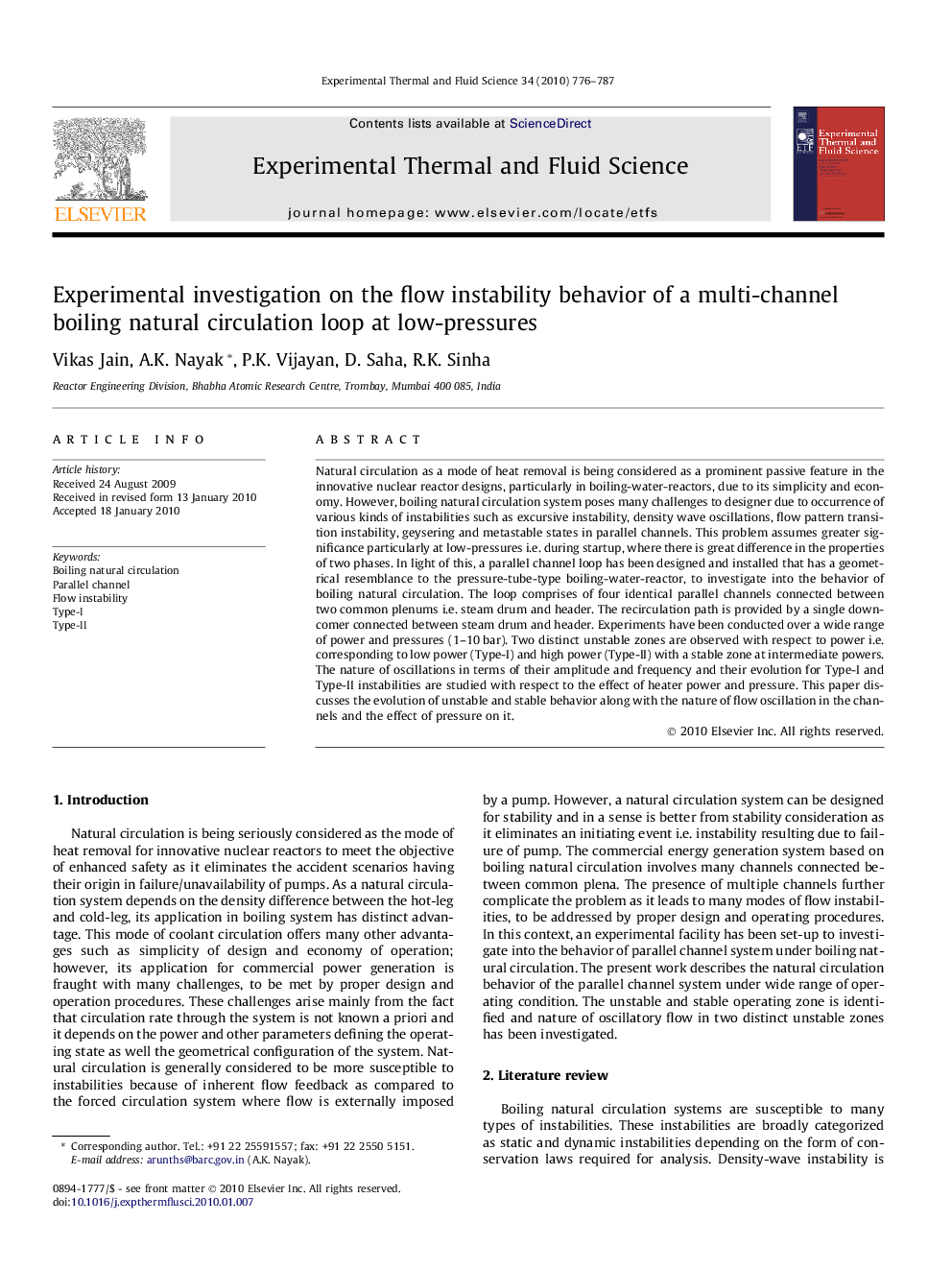| Article ID | Journal | Published Year | Pages | File Type |
|---|---|---|---|---|
| 652091 | Experimental Thermal and Fluid Science | 2010 | 12 Pages |
Abstract
Natural circulation as a mode of heat removal is being considered as a prominent passive feature in the innovative nuclear reactor designs, particularly in boiling-water-reactors, due to its simplicity and economy. However, boiling natural circulation system poses many challenges to designer due to occurrence of various kinds of instabilities such as excursive instability, density wave oscillations, flow pattern transition instability, geysering and metastable states in parallel channels. This problem assumes greater significance particularly at low-pressures i.e. during startup, where there is great difference in the properties of two phases. In light of this, a parallel channel loop has been designed and installed that has a geometrical resemblance to the pressure-tube-type boiling-water-reactor, to investigate into the behavior of boiling natural circulation. The loop comprises of four identical parallel channels connected between two common plenums i.e. steam drum and header. The recirculation path is provided by a single downcomer connected between steam drum and header. Experiments have been conducted over a wide range of power and pressures (1-10Â bar). Two distinct unstable zones are observed with respect to power i.e. corresponding to low power (Type-I) and high power (Type-II) with a stable zone at intermediate powers. The nature of oscillations in terms of their amplitude and frequency and their evolution for Type-I and Type-II instabilities are studied with respect to the effect of heater power and pressure. This paper discusses the evolution of unstable and stable behavior along with the nature of flow oscillation in the channels and the effect of pressure on it.
Related Topics
Physical Sciences and Engineering
Chemical Engineering
Fluid Flow and Transfer Processes
Authors
Vikas Jain, A.K. Nayak, P.K. Vijayan, D. Saha, R.K. Sinha,
